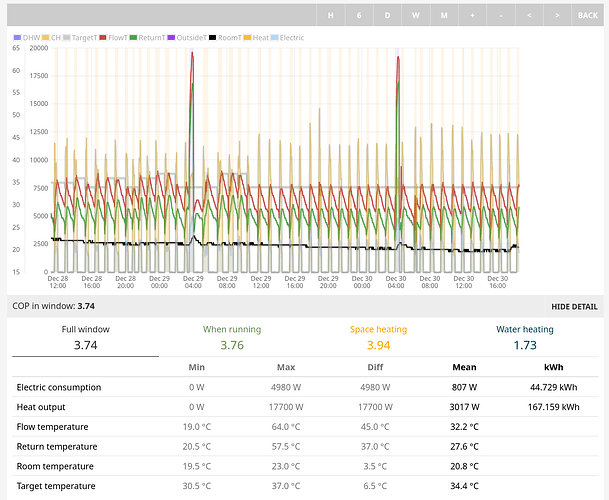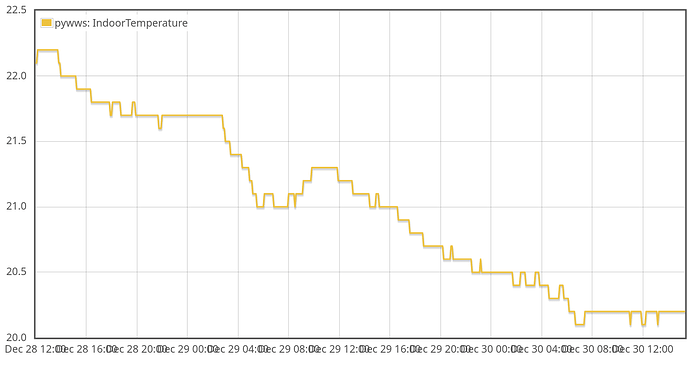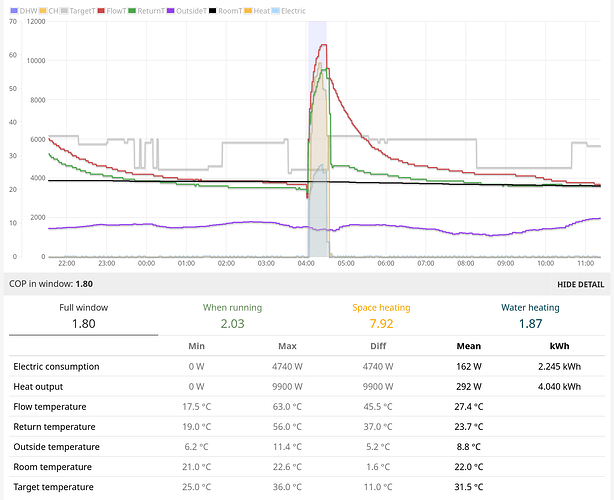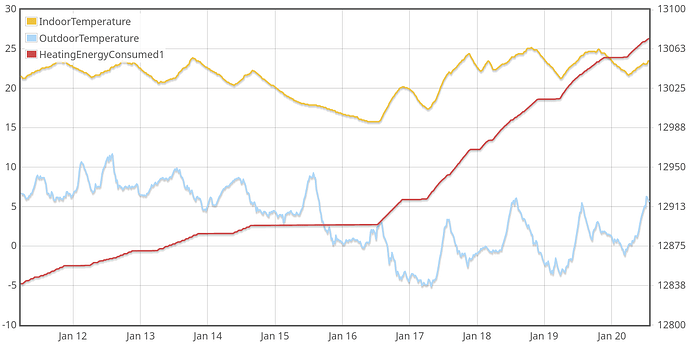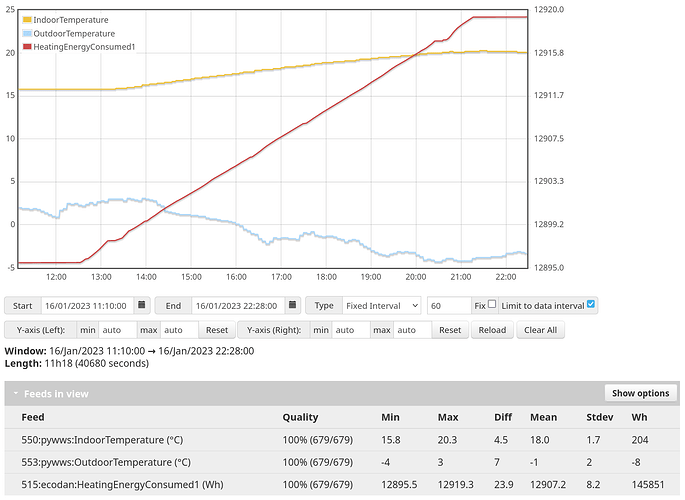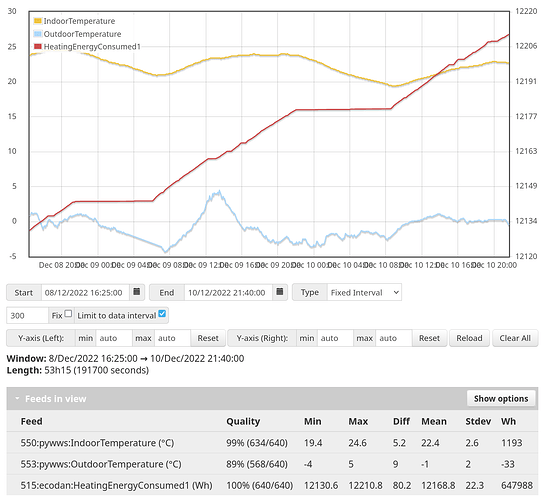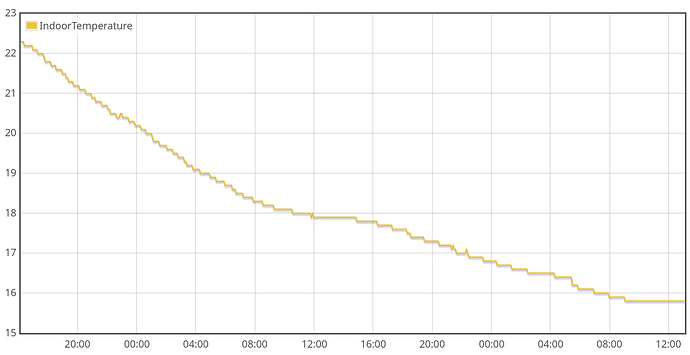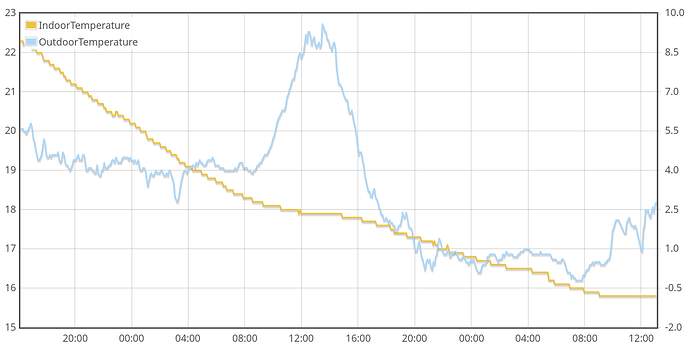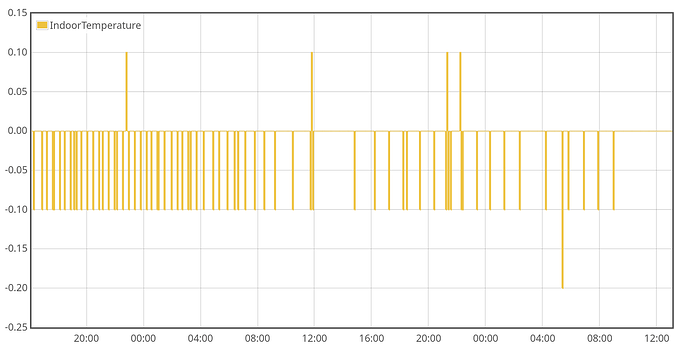In the 3 days we were away last week it consumed 45 kWh energy.
(you can see why I like to separate DHW and space heating on the other heat pump app for investigations like this, the space heating was actually 38 kWh)
Even with the heating on it still got cooler because the humans weren’t around doing things:
We lose about 1 degree per 10 hours when not heating:
That period of no-heating wasn’t long enough to allow me to look at recovery, it didn’t get cold enough to create a statistically significant recovery event.
Here’s a better example from January 2023.
Heating was off 2023-01-14T15:20/2023-01-16T12:40. It was cold outside and got colder. Let’s just be clear, any sort of holiday mode would be set to protect the house from getting cold enough to cause damage.
Room temperature went from 22.3 to 15.8 = 6.5 degrees over 45 hours => minus one degree per 7 hours. It heated back up over 9 hours from 15.8 to 20.3 = 4.5 degrees => plus one degree per 2 hours.
Zooming in on the recovery:
That was 24 kWh to come back.
I’m using the time from “off” to “recovered” to compare to another time. That’s about 54 hours.
I’ve hunted around for an equally cold time and found December 2022. In that same time window, with similar outdoor temps the heat pump used 80 kWh for space heating. In this specific case that’s three times as much energy than was be used for recovery.
Given this, you’d conclude that:
- You use more energy to heat the house whilst you are away than you use in recovery
- You should invoke the recovery before you get back home if you want it warm
Clearly there are many variables at play here. The outdoor temperature in this case meant there was a significant recovery event. Normally we don’t even have a noticeable recovery because the temperature drop isn’t very much.
You’re all quite capable of working out the formula for determining the heat loss over a period of time (thanks Newton) paying particular attention to the fact that heat loss gets much smaller when the house cools closer to the outdoor temperature. As a result, longer “off” times don’t get a lot worse than shorter ones. You can see here that it’s not a straight line down, and in fact towards the end it even plateaus:
The plateau in the middle is where it was daytime for a few hours and got warm outside which shows that heat loss is affected by outdoor temperature as you’re all well aware. In my case the house barely cools when it’s 10 °C outside:
If you want another way to look at it, these delta events show when the temp dropped and you can see they get more spread out as it stops dropping so often:
As the original question implies, the longer duration holidays clearly make sense as times to put the heat pump into holiday mode.
For shorter duration events it also makes sense. When we were on a different electricity tariff we even switched off overnight which is a very short holiday ![]()
My personal conclusion is that it’s always more cost effective to turn off the heat pump when you don’t need it, the duration doesn’t matter.
In Andrew’s case it looks like it was about 20 hours to recover so I can see why people might conclude that you should leave it on. That was 34 kWh for recovery and the holiday time window would have used 76 kWh if it was left running. The recovery was cheaper than leaving it on. This is glossing over things like time-of-use pricing that might mean you’d bump it on even when you aren’t there because the cost is so low.
For some situations your question might revolve around a more intense reactive recovery at higher flow temps (and hence lower CoP) rather than pro-active recovery. The old-fashioned “whack the thermostat up when we get home” trick that we know is somewhat misguided even with fossil-fuelled systems.
Practically our problem has always been knowing when we would return. Most of our holidays are somewhat open-ended so we’re never quite sure when we’re getting back. Even with more structured holidays we’ve had travel delays of over a day. There comes a point where you just have to accept that to get guaranteed user comfort you are going to need to accept some inefficiency.
